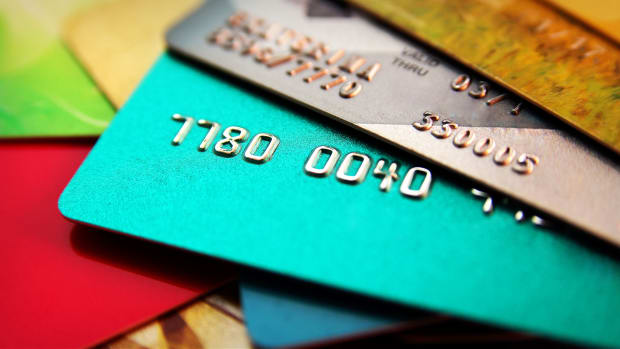
Like the swallows returning to Capistrano, Americans are veering back to significant credit card debt, and aren’t doing much to stem the tide.
According to fresh data from Transunion, total U.S. credit card balances stood at $930 billion in the fourth quarter of 2022. That’s up from $785 billion in December 2021.
DON'T MISS: Credit Suisse Hit by Another Scandal
That helped propel total credit card debt to a record $930.6 billion at the end of 2022, an 18.5% spike from a year earlier, according to the latest quarterly report by TransUnion. The average debt per borrower is also up over the same time period, from $5,127 to $5,805.

Getty Images
Balance Transfer Credit Cards – A Path Forward
All that debt is a growing problem and one of the best ways to solve that problem – balance transfer credit cards - isn’t exactly on cardholders' radar screen.
In a word, balance transfer credit cards offer debt-ravaged consumers the opportunity to swap out of a high-interest credit card and into a low-interest (or even no-interest) credit card.
A balance transfer card offers 0% interest on balance transfers for a promotional period that can range from 12 to 21 months depending on the specific credit card.
“For consumers in high debt, this can give you time to pay off the balance without additional interest piling up,” said Andrea Woroch, money-saving expert at AndreaWoroch.com. “That means, all of your payment goes toward shrinking the actual balance rather than some of the payment going toward useless interest fees. This can help people lower their debt and save a lot of money.”
For U.S. cardholders who are going through a tough financial time, “using a balance transfer card can give them more time to make smaller payments while they deal with the emergency without getting slammed with interest,” Woroch told TheStreet.
Evidently, there are plenty of balance transfer card deals on the market – if consumers would bother to get to know them.
“Despite a run of seven Federal Reserve rate increases last year that sent credit card APRs to their highest levels in decades, balance transfer credit cards with 0% intro APR offers are more widely available than at the start of 2022,” said Lending Tree’s chief credit analyst Matt Schulz in a recent report. “These cards, which can come with a 0% intro APR for up to 21 months, are perhaps Americans’ best weapons in the fight to reduce credit card debt.”
Credit Cardholders Unaware of Balance Transfer Cards
One primary problem with rising consumer credit card debt is a lack of awareness on effective options.
A separate study from Bankrate showed that 37% of credit card consumers who have card debt aren’t aware that balance transfer credit cards exist.
Credit card consumers who avoid balance transfer card deals are doing themselves a disservice – and Bankrate brought the receipts.
For example, the report cites an average credit card balance of $5,805, with an interest rate of 19.93% where the user is only making minimum credit card payments.
In that scenario, it would take that credit card owner 208 months to pay down the entire $5,805 card debt.
If the same user steered the entire credit card debt to a 0% balance transfer card with a 21-month introductory offer, followed by an average credit interest rate range of between 17.49% and 28.24% and an average monthly payment amount of $276, the entire credit card debt in only 24 months.
In addition to saving money on interest charges, balance transfer credit cards can also help cardholders get their debt under control by allowing them to focus on paying down the principal balance of their debt rather than just paying interest charges.
“This can help cardholders become debt-free more quickly, as they can pay down their debt faster without the added burden of high-interest charges,” said Debt Consolidation Care personal finance expert Loretta Kilday. “Overall, balance transfer credit cards can be a helpful tool for cardholders in high debt, but it's essential to use them responsibly.”
Cardholders should always read the terms and conditions of the balance transfer offer carefully.
“They should also use the promotional period to pay down their debt as much as possible so they can become debt-free and avoid falling back into high debt in the future,” Kilday said.







